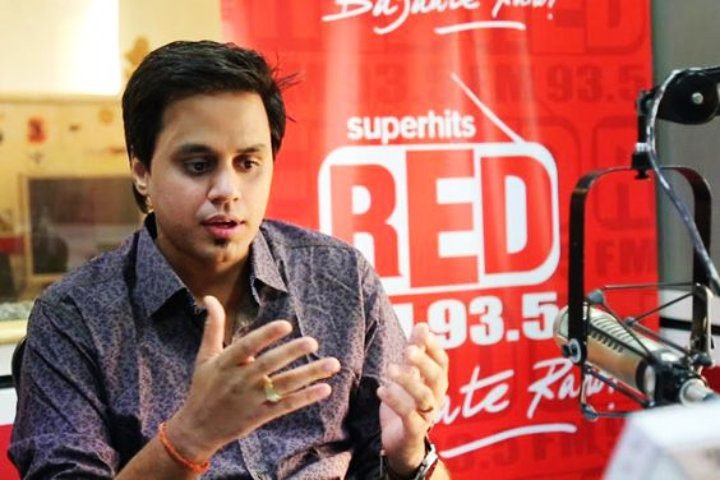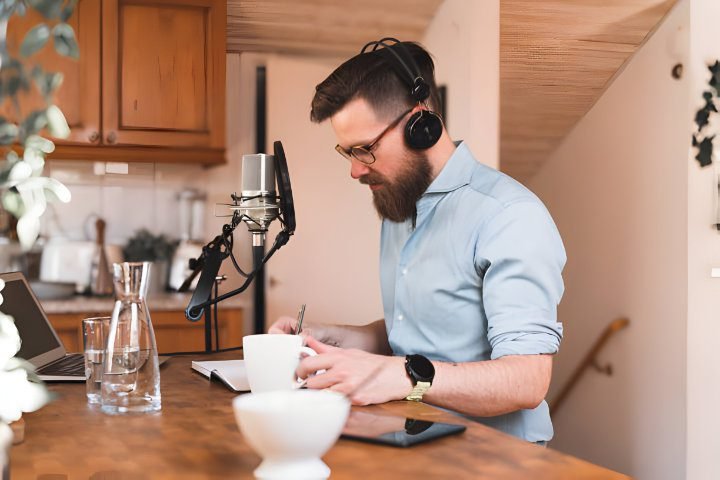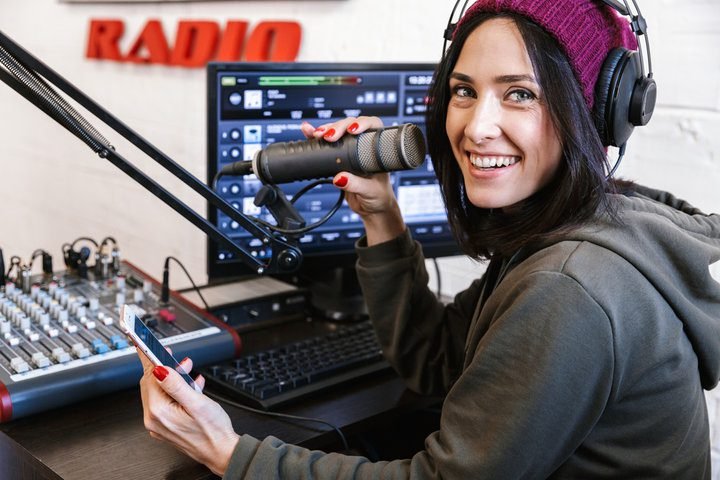Writing a radio script is a unique and rewarding experience that allows you to connect with audiences through the power of sound. Unlike television or film, where visuals take center stage, radio relies solely on the spoken word to convey stories, ideas, and emotions.
In This Article
Crafting a compelling radio script requires a delicate balance of creativity, precision, and an understanding of the medium’s distinct characteristics. Mastering the art of radio script writing ensures that your words resonate with listeners and leave a lasting impact.
Characteristics of a Radio Script
A well-crafted radio script has several essential characteristics that distinguish it from other forms of writing. First and foremost, it must be engaging for the listener, capturing their attention from the very first line. Clarity and conciseness are crucial, as radio scripts do not allow for ambiguity or unnecessary wordiness.
A successful radio script should also be structured to allow smooth transitions between segments, maintaining a consistent flow and rhythm throughout the broadcast.
The Language of Radio Scripts

The language used in radio scripts plays a crucial role in creating an immersive and captivating experience for listeners. Here are five key elements to consider:
- Conversational Tone: Scripts for the radio should imitate how people naturally talk every day. This helps the audience feel like they’re connecting with something familiar.
- Active Voice: Use an active voice to add energy and liveliness to your writing, making it more interesting and easier to understand.
- Simple Sentences: When you need to express complex ideas or convey detailed information, it’s best to use straightforward and uncomplicated sentences. This makes it easier for your audience to understand the content.
- Avoiding Technical Jargon: When crafting your message, make sure to avoid using overly technical language or industry-specific terminology that might be difficult for your audience to understand or relate to.
- Creating Vivid Imagery: Radio scripts use detailed language to create clear mental images for the audience, making up for the lack of visuals.
Radio Script Format
Adhering to a consistent and widely accepted radio script format is essential for ensuring clarity and professionalism. A well-structured radio script typically includes the following elements:
- Header: This section contains essential information such as the program title, episode number, date, and duration.
- Introduction: A brief opening segment that captures the listener’s attention and sets the tone for the broadcast.
- Body: The main content of the script is divided into logical segments or chapters, each with its own subheading.
- Transitions: Smooth segues between different sections, ensuring a seamless flow throughout the broadcast.
- Conclusions: A concise wrap-up that summarizes key points and leaves a lasting impression on the audience.
Radio Script Example
To better understand the nuances of radio script writing, let’s explore a radio script writing example:
Intro: [Radio Ident Jingle*] (duration). *Ident Jingle: It identifies the radio station. for example, Bajate Raho... for Red FM 93.5 Cue immediately to RJ: Hello and welcome to [Radio Station Name]! We have a great lineup of news and music for you today. But first, let's check out the latest song by [insert artist here] ... (duration in seconds) Cue track: [insert artist details here] (duration) During the music track, keep the background noise level low. When the track ends, start ambient background music while RJ starts talking. Cue RJ (fast-paced): Great new song from [insert artist]. That’s going to be a classic! Now, we’ve got a lot of interesting things to talk about today. There’s a rumor going around… (begin gossip section here) (enter the estimated duration of the segment, e.g., 4 minutes.) End of segment. Cue [Radio Ident Jingle] (duration). Cue RJ: Coming up next, we have two great new tracks from [insert artists here] and the latest cricket update from [insert expert name here]. But first, [insert guest name] is joining me in the studio for a chat! (begin chat segment here) (estimated duration of the segment, e.g., 6 minutes) RJ: Thanks for coming in! Let's put some music on... (duration) Cue track [insert artist details here] (duration) Mix into 2nd track [insert artist details here] … (duration) During the music track, keep the background noise level low. When the track ends, start ambient background music while RJ starts talking.
This is how the script of a radio program goes on.
Radio Jingle Script

Radio jingles are short songs or catchy musical hooks that promote a product in a radio spot.
The purpose of a jingle is to capture a listener’s attention and present an upbeat impression about a product or service. Jingles are meant to be as memorable as possible, serving as an ideal marketing tool.
Radio jingles are not only catchy but also serve as powerful branding tools for stations and advertisers. When writing a radio jingle script, it’s essential to collaborate closely with composers and lyricists to ensure that the lyrics complement the melody and effectively convey the intended message. The script should be concise, memorable, and aligned with the overall brand or product identity.
When creating a catchy jingle, it’s important to cleverly include your brand name, slogan, and value proposition in the lyrics that will be crafted into a melody. Unlike regular songwriters, jinglewriters write specifically to advertise a product.
Jingles should be short and memorable, typically lasting between 15 and 25 seconds, but they can range from five to 60 seconds. Many jingle writers compose the music and write the lyrics simultaneously.
Red FM Jingle
The Red FM Jingle is an excellent example of a catchy and memorable jingle. It has over one million views on YouTube.
Spotify Launch Soundtrack
Spotify’s entry into the music scene in India as a popular global music streaming app required a groundbreaking approach. The challenge was not only with its marketing strategy but also with the music itself. Despite being known for its excellent personalized music recommendations, Spotify faced performance pressure in a diverse market like India. The launch in India required Spotify to impact the country’s music landscape greatly.
The launch soundtrack was created using the beats of some of India’s most popular songs. It was based on ‘The Beat of a Billion’, which incorporated elements derived from decoded instruments, beat progressions, and chord patterns of some of famous Indian music. The soundtrack was composed while considering the audio elements intrinsic to India’s music preferences and tastes.
The beat goes, Dhoom dhak dhak dhak, Ki dhak dhoom, Dhoom dhak dhak, Dhak dhak dhak! The beat goes, Let the music play, Come on make me sway, Gime lots of bass. I wanna feel that bass boom boom, I want it in my face boom boom, I want to feel that bass boom boom, I wanna see you shake the room. The beat goes, Dhak dhak dhak Dhoom dhak dhak Ki dhak dhoom, Dhoom dhak dhak, Make it bassy Make it pacey Make it race-y Make it desi Make it tez Make it slow Feel the high Drop it low Turn it up thoda loud Baby come sing with the crowd You know your hips are moving To this happy sound Headphones in Drown the world out Hit by hit Chalo move now You know you got the swag From Bollywood to trap I lose my mind When ya do it like that You do it like that, I wanna feel that bass boom boom I want it in my face boom boom I want to feel that bass boom boom I wanna see you shake the room The beat goes, Dhak dhak dhak
Radio Spot Cigna TTK Health Insurance
SFX: Funky town tune VO: If you know what this song is, you are now old. It's time to buy a health insurance plan. Cigna TTK Health Insurance Call 1800 102 4462 now.
Radio Spot Moov Pain Relief Cream
Here is another illustration of a radio advertisement for Reckitt Benckiser’s Moov Pain Relief Cream product. The advertising firm McCANN India Mumbai was responsible for creating the advertisement.
Context of the Ad
In India, as a sign of respect, younger people bend down and touch the feet of their elders. In return, the elders would give blessings like ‘May you live a long and prosperous life’, ‘Be happy forever,’ or ‘Always be happy.’ But these years, this custom has been reduced to a mere formality, with people saying, ‘I bend down to touch your feet’ but barely stretching their hands beyond the elders’ thighs or knees.
Advert Script
Young man: I touch your feet papa. Old man: It’s ok, it’s ok…May you live a happy life son, right up till tomorrow morning. AVO: For full blessing, do full bending. Moov Back Pain Relief Cream.
Radio Scripts on Social Issues

Radio has always been a powerful way to address social issues and create positive change. When writing radio scripts about social issues, it’s important to balance giving information, evoking emotions, and inspiring action.
Thorough research, sensitivity, and a deep understanding of the issue are crucial. Also, including personal stories and perspectives can help make complex topics more relatable and connect with listeners more deeply.
Here is a radio script for PSA (public service advertisements) from Mumbai Police.
SFX: TRAIN COMES INTO PLATFORM MVO1: 1: 30 am MVO2: Meera decides to take the local train after a long day at work. SFX: TRAIN LEAVES MVO1: 1: 32 am MVO2: The train compartment is empty. MVO1: 1: 35 am SFX: TRAIN STOPS MVO2: The train halts between two stations. A suspicious-looking man takes a seat next to her. MVO1: 1:44 am SFX: CRICKETS, FOOTSTEPS MVO2: Meera gets down at the platform. It’s pitch dark outside. MVO1: 1:56 am SFX: MEN TALKING MVO2: A group of men stares at her. She ignores them. MVO1: 2:00 am MVO2: Meera reaches home safely. SFX: DOOR CLOSES MVO1: 2:07 am MVO2: She forgets to turn off the balcony lights. MVO1: 2:10 am MVO2: Meera’s husband throws a vase at her. SFX: VASE BREAKS MVO2: She collapses. ANNOUNCER: For 7 out of 10 women, the streets of Mumbai are safer than their own homes. Report domestic abuse on 103, the Mumbai Police helpline.
Radio Jockey Scripts in Hindi

Radio jockey (RJ) scripts are important for engaging Hindi-speaking audiences. Writing RJ scripts in Hindi requires a deep understanding of the language’s nuances, idioms, and cultural references. Including humor, wit, and local expressions can make the experience more authentic and relatable for the audience.
This is the transcript of a live radio call-in, not a regular spot. This is a recording from the live program of FM channel 93.5 RED FM:
FM RJ: Superhits 93.5 RED FM par main hoon Rohini, this is RED FM ADDA, 2 to 5, ekdum live only on 93.5. Aur yaar aaj adde par bahut saare phone aa rahe hain, ek hi bande ke. Iska naam hain Harvinder urf Romy. Matlab Harvinder ek ko main jaanti hoon joh ki happy hain, but this one’s called Romy. Anyway, Romy…kya hua Romy, tum baar baar kyun phone kar rahe ho yaar? Caller: Oh ji hello! Jee main apni girlfriend Banno ko picture dikhaane le jaa raha tha. Ab ji jeb mein they sirf 5 rupaye. Hain. Toh maine bola ki chal Banno park mein hee walking talking kar lete hain. Hain! Oh ji hum dono ekdum se close aa hi rahe they ki tabhi uska bada bhai, Mr. Phagwara, Body Builder Charanjit Lakkha aa gaya! Usne mujhe bade hee romantic pose mein dekh liya... aur phir mujhe maarne ko bhi aa gayaa. Oh ji main bhaga , Woh bhi mere peeche bhaaga. Maine pind mein athletics kee hui hain, toh main bhi kaafi tez bhaag leta hoon. RJ: Phir kya hua? Caller: Phir uske teen dost two wheeler par mera peecha karne lage. Main gully mein bhaaga, gully se Kartar ke ghar ke peeche bhaaga. Phir Balwant ke tractor ke upar chad gaya aur phir bhaaga. Par woh peecha nahi chod rahe. Phir main jump laga ke bhaaga, toh kuch kutte bhi mauka dekh ke mere peeche bhaage. Bhaagta gaya, bhaagta gaya, main aage, Lakkha peeche, uske peeche teen dost, teh uske peeche teen kutte! Oh bhaagte bhaagte bhaagte. Oh ji ab bhaag bhaag ke haalat itni tight ho gayi ki saamne Nimbooz dikha, toh maine jeb se paanch rupaye nikaale aur ek thandi kaanch waali bottle gatak lee. O jee ekdum fresh ho gaya jee main! RJ: Aur phir? Lakkha aur uske doston ne peecha karna chor diya? Caller: (Loud, with huffing and puffing) Phagwara district mein kisi ko chorte kahaan hain, OJEE MAIN TOH ABHI BHI BHAAG RAHA HOON UNSE! Main aage, toh Lakkha mere peeche, uske teen dost aur 4 kutte aur un ki family un ke peeche! Aur sab bhaag rahe hai! Ojee, Maine toh yehi batane ke liye phone kiya tha ki ab Nimbooz ki 200ml kaanch waali bottle sirf 5 ki hain! Waise 10 ki milti thi, par ab ek mahine ke liye sirf paanch ki hain! Woh bhi including all taxes. Oye, Slogan bhi vadda changaa hain jee,'Kaanch ki hain, toh paanch ki hain! OYE TERI! Lakkha aa gaya, main bhaaga..... (Phone gets disconnected.) RJ: Bhaagte raho Balvinder, I mean Harvinder, I mean Romy, I mean bajaate raho!
The Script was accessed from here.
To write effective radio scripts, you need creativity, technical skills, and a commitment to engaging your audience through sound. The goal is to create engaging scripts that connect with listeners. Whether you’re writing for a radio drama, talk show, or jingle, your ability to craft words into captivating experiences is key in this dynamic medium.








